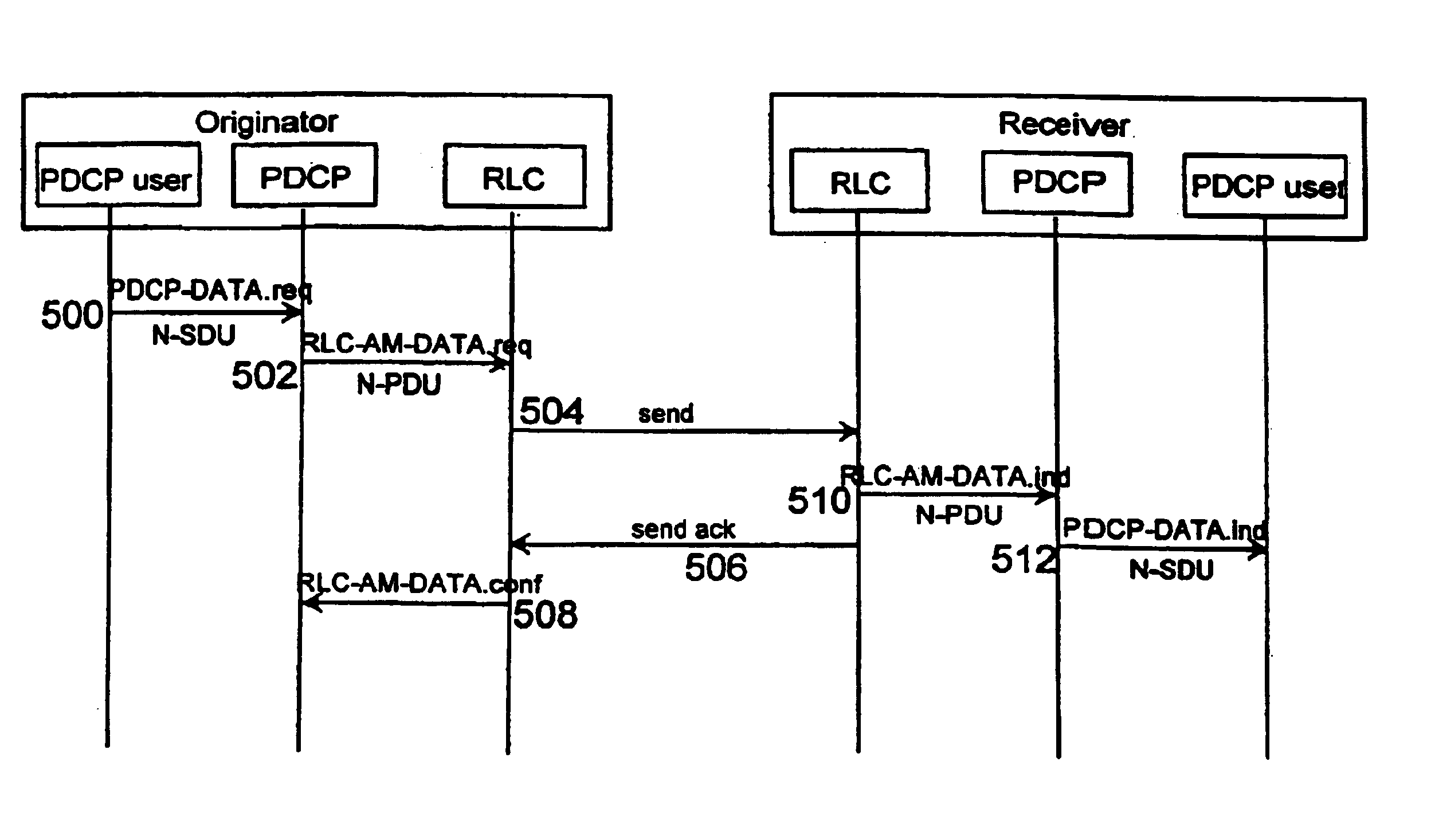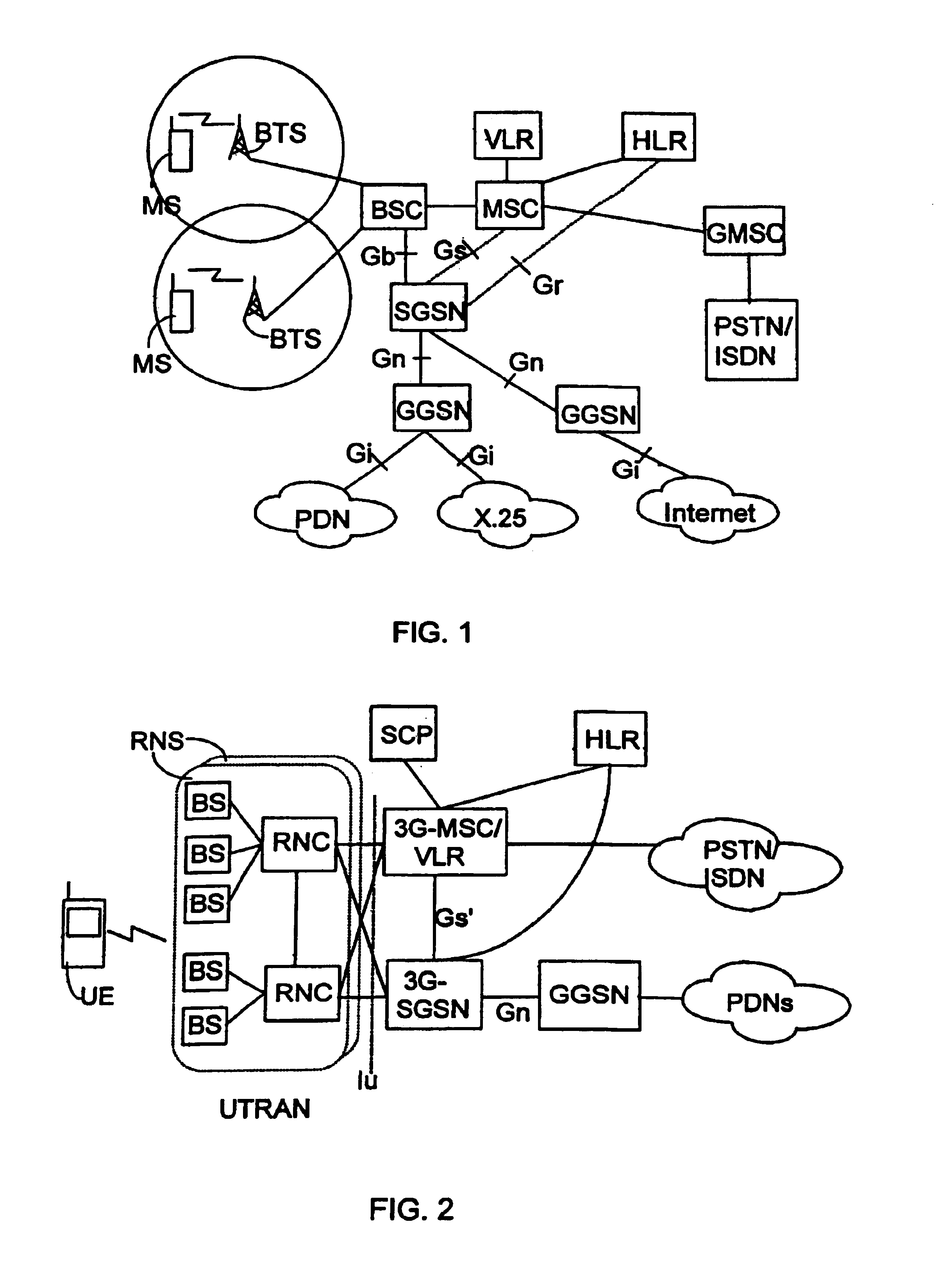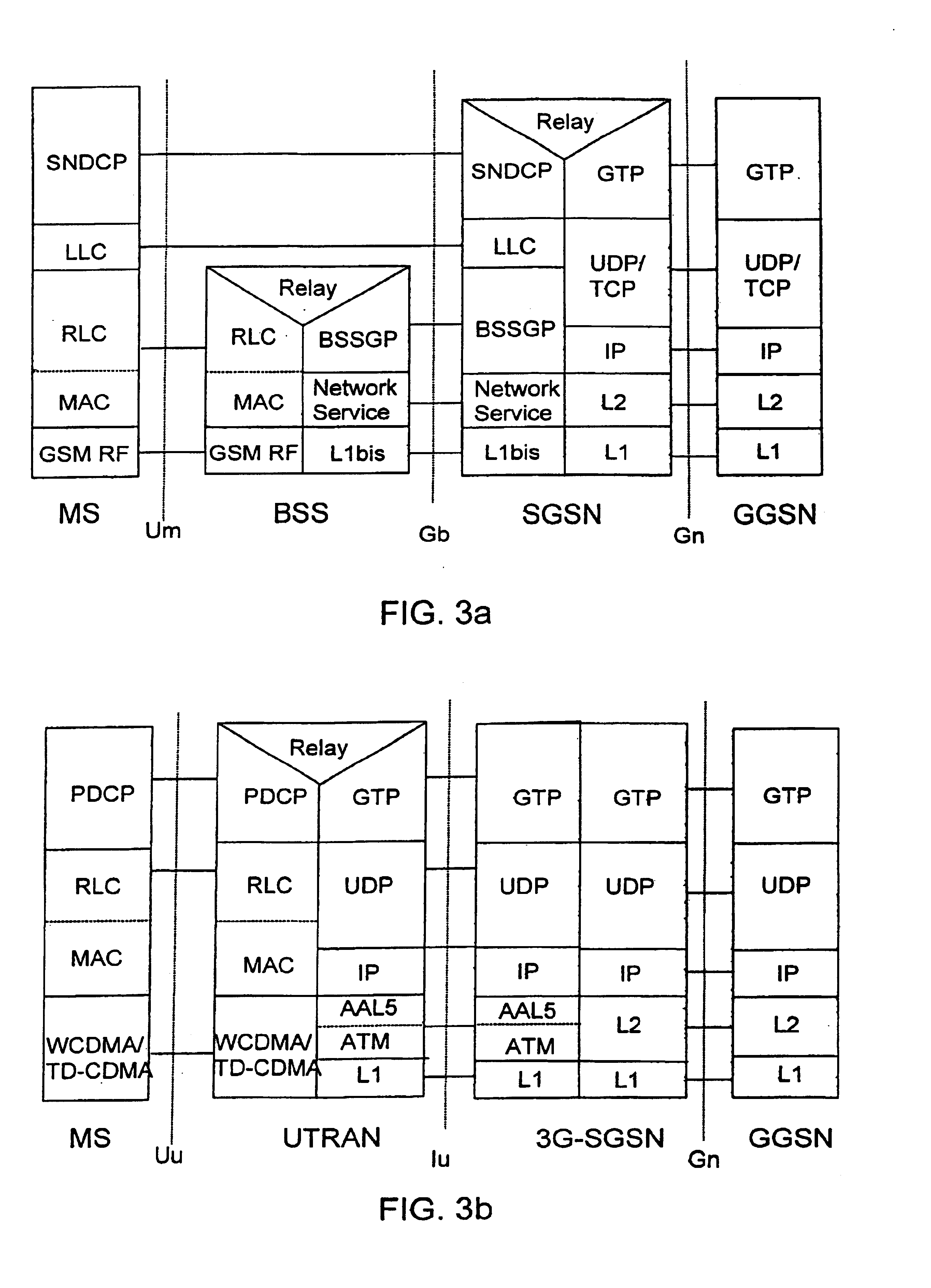Data packet numbering in packet-switched data transmission
a data packet and data transmission technology, applied in the field of packet-switched data transmission optimization, can solve the problems of no longer unambiguously, the reliability of the handover cannot be guaranteed, and the creation of n-pdu numbers from pdcp-pdu numbers, etc., and achieve the effect of reliable data transmission
- Summary
- Abstract
- Description
- Claims
- Application Information
AI Technical Summary
Benefits of technology
Problems solved by technology
Method used
Image
Examples
second embodiment
[0039] a restriction is set on the RLC layer such that the number of unacknowledged data packets RLC-SDU (=PDCP-PDU) on the RLC layer is not allowed to exceed said 255 data packets at any stage. Thus, the number of data packets PDCP-PDU that are received on the RLC layer and are to be transmitted is not restricted, only the number of unacknowledged data packets is restricted. For the transmission, the RLC layer divides the data packets RLC-SDU to be transmitted into smaller data units RLC-PDU, which are identified by numbering. The RLC layer is capable of continuously adapting the size of its transmitting window, i.e. the number of data units RLC-PDU to be transmitted at one time. Thus, if the number of unacknowledged data packets RLC-SDU is about 255, the transmitting window size can be adjusted on the RLC layer to be so small that one whole data packet RLC-SDU cannot be transmitted, and the RLC layer does not divide the data packet into smaller data units RLC-PDU. Only after recei...
third embodiment
[0040] a restriction can be set on the size of the transmitting window of the protocol layer of the application-level, e.g. TCP layer, above the PDCP layer. When transferring the information handled by the application by means of the UMTS and / or the GPRS, the number of data packets that are transmitted in one burst from the higher protocol layer used by the application to the PDCP layer is restricted. The number of data packets PDCP-SDU received by the PDCP entity is restricted to its maximum value according to the above formula, and the maximum number of data packets in one burst is 255. This way it can be ensured that no data packet PDCP-PDU obtains the same N-PDU number converted according to the GPRS system as some other data packet received by the PDCP entity.
fourth embodiment
[0041] the PDCP-PDU numbering used in dual-system mobile stations capable of operating both in the UMTS network and in the GPRS network is always restricted to be 8-bit in length. Thus, a possible confusion in the conversion of data packet numbering is automatically avoided. The mobile stations of the GSM system and the UMTS system contain the information on their own mobile station classmark, indicating what kind of data transmission connections the mobile station can establish and to which telecommunication systems. This mobile station classmark data can be utilized in connection with this embodiment such that when said dual-system mobile station registers in a network, the network and the mobile station start to use 8-bit data packet numbering in their mutual packet-switched data transmission. To ensure the use of 8-bit data packet numbering any one of the embodiments described above can further be used in this connection to restrict the number of data packets to be transferred o...
PUM
 Login to View More
Login to View More Abstract
Description
Claims
Application Information
 Login to View More
Login to View More - R&D
- Intellectual Property
- Life Sciences
- Materials
- Tech Scout
- Unparalleled Data Quality
- Higher Quality Content
- 60% Fewer Hallucinations
Browse by: Latest US Patents, China's latest patents, Technical Efficacy Thesaurus, Application Domain, Technology Topic, Popular Technical Reports.
© 2025 PatSnap. All rights reserved.Legal|Privacy policy|Modern Slavery Act Transparency Statement|Sitemap|About US| Contact US: help@patsnap.com



